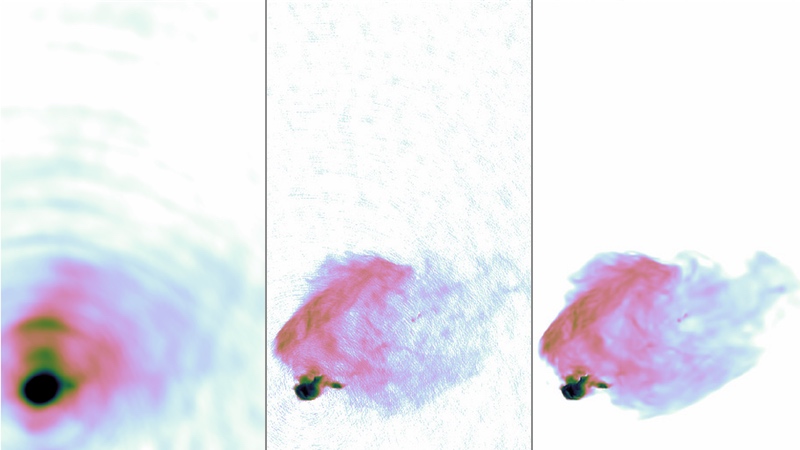Published:

Radio wave imagery has given astronomers a window into distant galaxies.
Now, a new three-year project involving a leading physicist from Heriot-Watt University, together with colleagues at the Edinburgh Parallel Computing Centre (EPCC) based at the University of Edinburgh, is set to further this technology as never before.
Professor Yves Wiaux, from the Institute of Sensors, Signals & Systems at Heriot-Watt, is working alongside Adrian Jackson from EPCC, to develop new mathematical algorithms capable of transforming vast amounts of data into advanced, high-definition images.
The project will develop a new generation of algorithms at the interface of optimisation theory and deep neural networks to transform data into images.
The Extreme Scale Precision Imaging in Radio Astronomy (EIRA) project has been awarded £1.1 million from the Engineering and Physical Sciences Research Council (EPSRC) to progress computational imaging algorithms for radio astronomy, using land based telescope arrays to capture radio wave data from space.
A raft of enormous radio telescopes, such as the Square Kilometre Array planned for Australia and South Africa, promise to image the sky at a much higher resolution, with greater sensitivity than the previous generation of telescopes.
But the algorithms currently used to convert radio wave data into high definition images lack power and versatility to handle the faintest and most diffuse radio emissions from the universe. This limits the telescopes’ ability to display sharp imagery known as visual acuity.
Professor Wiaux is addressing this problem by proposing a new generation of intelligent algorithms capable of combining the data observed by the radio telescopes with advanced physical image models learnt from large databases. In this context the task of learning image models is handled by sub-algorithms called "artificial neural networks” that can be trained on databases to optimise their behaviour, in very much the same way as the human brain learns from experience.
Once complete, the project will allow astronomers to study the Universe in extraordinary detail, offering greater analysis of astronomical phenomena such as black holes, and the evolution of all sorts of cosmic structures.
Professor Wiaux, says: “The project aims to design transformative methodology to endow radio telescopes with unprecedented visual acuity. A new generation of algorithms will be developed at the interface of optimisation theory and deep neural networks to transform data into images."
Next generation radio wave imagery also requires next generation supercomputers capable of processing vast amounts of data. This is where the other side of the EIRA project comes to the fore. Adrian Jackson is a Senior Research Fellow at the EPCC and expert in high performance computing. He is overseeing the creation of a new computing software capable of supporting highly precise computational imaging.
He said: “The extreme datasets that next generation telescopes will generate present significant challenge for processing and image creation. High performance computing is fast becoming a key component in such instruments, and this project will help to ensure that scientists can achieve better quality results faster and more efficiently than ever before."
While the project holds tremendous potential for studying the vastness of space it also intends to provide greater insight for healthcare. By integrating the technology into existing scanners, doctors will be able to detect very faint abnormalities in medical images that would otherwise go undiagnosed. This potentially life-saving development is something that the team recognise as a major step forward in patient care and a leap in fighting diseases such as cancer.
Professor Wiaux, continues: “This technology can be adapted to medical imaging, enabling a robust diagnosis earlier in the development of a disease leading to lighter treatment with better chances of success, for a better healthcare at lower cost.”